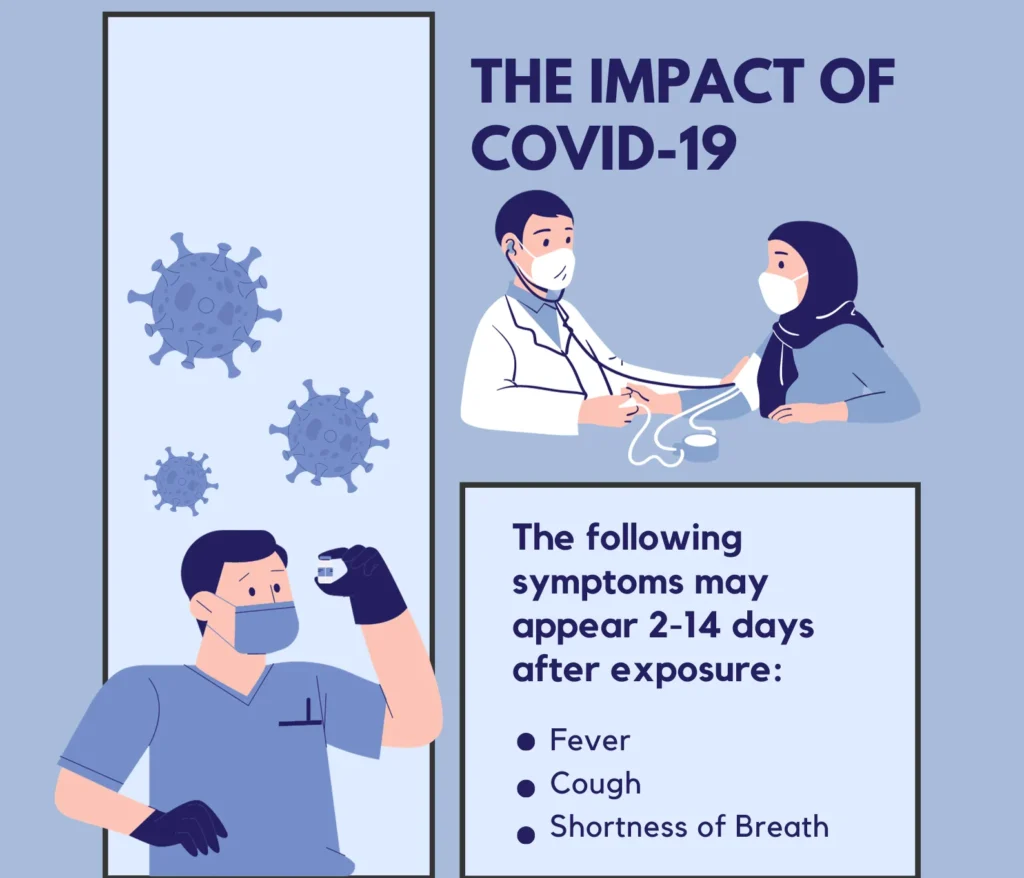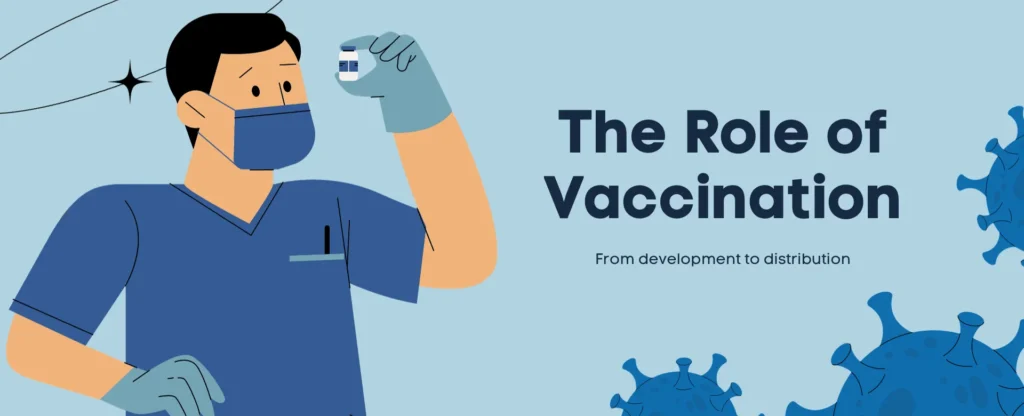
Pandemic Preparedness: Lessons from COVID-19
Health & Wellness
The COVID-19 pandemic has been a defining global crisis, challenging healthcare systems, economies, and societies at large. Its wide-reaching impact has unveiled both strengths and shortcomings in how countries prepare for and manage pandemics. This brings us to the crucial subject of pandemic preparedness—essentially, how well-equipped we are to deal with mass-scale health emergencies. Drawing lessons from COVID-19 is not just a retrospective exercise but a necessity for the future. This blog will delve into key aspects such as the role of data analytics in managing pandemics,
how countries with differing resources fared, and why vaccines became the cornerstone of getting life back to some semblance of normality. We will explore best practices, look at case studies, and consider how the experience of COVID-19 can guide policies and strategies for a more resilient future. This comprehensive examination aims to provide actionable insights for individuals, healthcare professionals, and policymakers alike.
The Future of Pandemic Preparedness: Technology and Innovations Post-COVID-19
1. The Impact of COVID-19:
a. Global Impact:
The COVID-19 pandemic has had a pervasive impact on countries around the world, affecting every facet of life—from public health to economics to daily routines. The virus quickly spread from its initial epicenter in Wuhan, China, to become a global pandemic, affecting millions of lives and exposing the vulnerabilities in global health systems. Despite the advancements in medical science, the pandemic proved that even the most developed nations were not fully prepared for a health crisis of this magnitude.
b. The strain on Healthcare Systems:
Healthcare systems worldwide were strained under the burden of the pandemic, facing shortages in human resources, equipment, and medical supplies. Hospitals were overwhelmed, leading to a rationing of medical care, a scenario few had thought possible in the modern age.

The pandemic showcased the importance of robust healthcare infrastructure and raised questions about readiness for future pandemics. Issues like a shortage of ventilators, personal protective equipment (PPE), and intensive care unit (ICU) beds were laid bare, necessitating urgent attention.
c. Economic Implications:
The pandemic’s economic toll has been equally devastating. Lockdown measures, though necessary for public health, brought economies to a grinding halt. Businesses closed, unemployment rates soared, and the global economy entered a period of recession. Although various stimulus packages were launched to revive economies, the impact has been long-lasting, especially on small businesses and vulnerable communities. Moreover, the pandemic has accelerated a shift towards digitalization and remote work, changes that may have long-term implications for economic models.
2. Strategies for Pandemic Preparedness:
Pandemic preparedness is a multi-dimensional effort that involves various sectors, including public health, logistics, communication, and technology. Effective strategies for preparedness can significantly minimize the impact of a pandemic on human life and economic stability. Here are some core components:
- Proactive Monitoring and Surveillance: Real-time tracking of infectious disease outbreaks and monitoring of public health data are crucial for early detection. Syndromic surveillance and advanced analytics can forecast trends and hotspots, allowing for prompt intervention.
- Stockpiling Essential Supplies: One of the most critical aspects of pandemic preparedness is the stockpiling of essential supplies like ventilators, PPE, medications, and vaccines. Such stockpiles should be continuously monitored and updated to ensure they meet current needs and that no items have expired.
- Healthcare Infrastructure: A resilient healthcare system with sufficient intensive care units (ICU), trained personnel, and facilities can make a significant difference in pandemic outcomes. Plans should be in place for rapid upscaling of healthcare services and emergency workforce training.
- Data Analytics: Advanced data analytics can help governments and healthcare organizations make data-driven decisions. From understanding how the virus spreads to resource allocation, the insights provided by data are invaluable.
- Public Communication: Clear, transparent, and consistent communication is essential during a pandemic. This includes the use of social media, press releases, and direct messaging to provide up-to-date information, instill public confidence, and combat misinformation.
- International Cooperation: Pandemics are global crises that require international cooperation for information sharing, research, and resource mobilization. Multilateral organizations like the World Health Organization play a pivotal role in facilitating such cooperation.
- Telemedicine: The COVID-19 pandemic has showcased the utility of telemedicine in providing healthcare services when traditional methods are strained. Telemedicine can be an effective tool for triaging, initial consultations, and follow-up visits, reducing the burden on healthcare facilities.
- Vaccination Programs: Vaccines are often the most effective tool for controlling pandemics. A well-prepared strategy should include early investment in vaccine research and a plan for rapid distribution once a vaccine is available.
- Psychological Support: Pandemics take a toll on mental health, and systems should be in place for psychological support. This could be in the form of helplines, online counseling, and public awareness programs regarding mental health.
- Legal and Ethical Guidelines: Decisions made during a pandemic, such as quarantine measures or resource allocation, often have legal and ethical implications. Clear guidelines and frameworks should be established beforehand to guide such decisions.
By focusing on these strategies, governments, healthcare organizations, and communities can better prepare for future pandemics, minimizing loss and suffering.
3. Lessons from COVID-19:
The COVID-19 pandemic serves as a monumental case study in public health, crisis management, and societal response. The experiences—both positive and negative—provide valuable lessons for future pandemic scenarios.
a. Case Studies of Countries That Managed Well:
Countries like New Zealand, Taiwan, and South Korea have been lauded for their handling of the pandemic. Key factors that contributed to their success include early detection, strict quarantine measures, and effective public communication. New Zealand implemented an aggressive elimination strategy, closing its borders and enacting strict lockdown measures. Taiwan capitalized on its previous experience with the SARS epidemic, enacting swift measures such as widespread testing and contact tracing. South Korea implemented a robust testing and contact tracing system, coupled with clear public communication.
b. Case Studies of Countries That Didn't Manage Well:
On the flip side, countries like the United States and Brazil faced considerable challenges. Delayed response, political polarization, and misinformation contributed to these struggles. The U.S. faced issues ranging from inadequate testing to unequal healthcare access, exacerbated by conflicting messages from federal and state officials. Brazil’s challenges were compounded by leadership dismissing the virus’s severity, leading to late and insufficient response measures.
c. Lessons to Be Learned for Future Pandemic Scenarios:
Early Action is Crucial: The earlier the detection and response, the better the outcome. Delayed action can result in rapid spread and a much higher mortality rate.
- Unified Response: A centralized, coordinated response minimizes confusion and maximizes effectiveness. Contradictory directives from different levels of government or agencies can severely hamper response efforts.
- Clear Communication: Consistent, transparent communication from trusted authorities is vital in managing public behavior and expectations.
- Healthcare Readiness: Preparedness isn’t just stockpiling; it’s also about having a healthcare system agile enough to adapt to extraordinary demands.
- Social Responsibility: Public adherence to guidelines and protocols is crucial. Community-driven initiatives can complement governmental efforts.
- Technological Aid: The use of technology for contact tracing, information dissemination, and telehealth can significantly augment pandemic response efforts.
- Global Cooperation: In our interconnected world, international cooperation is not optional but essential. Sharing research, data, and resources can make a significant difference in global outcomes.
- Ethical Considerations: Pandemics raise complex ethical questions, such as who gets access to limited resources like ventilators or vaccines. Ethical frameworks should be established in advance.
- Mental Health: The psychological impact of a pandemic is profound and must be part of any comprehensive response strategy.
By dissecting the successes and failures during the COVID-19 pandemic, the world has an invaluable opportunity to prepare better for future pandemics. This involves not just medical and logistical preparation but also societal, ethical, and psychological readiness.
4. The Role of Vaccination:
Vaccination has been a cornerstone in the global response to the COVID-19 pandemic. Its importance lies not only in individual protection but also in the broader aim of achieving community immunity to curb the spread of the virus. Here are some of the crucial aspects of the role of vaccination:

a. Importance of Vaccines in Controlling the Spread:
Vaccines work by training the immune system to recognize and combat specific viruses or bacteria. When a significant percentage of a community becomes immune, either through vaccination or previous infections, the virus has fewer hosts to infect, slowing or stopping its spread. This is known as herd immunity. Vaccines have played a vital role in the reduction of COVID-19 cases, hospitalizations, and deaths, and they are critical for resuming normal societal functions.
b. Public Perception and Hesitancy:
Despite the proven efficacy of vaccines, public hesitancy remains a significant barrier to achieving widespread immunity. Factors contributing to vaccine hesitancy include misinformation, distrust in government or pharmaceutical companies, and cultural or religious beliefs. Public health campaigns, clear communication from trusted authorities, and community engagement are essential for addressing these concerns and encouraging vaccination.
c. Real-world Data on Vaccine Effectiveness:
Extensive real-world data have corroborated the effectiveness of COVID-19 vaccines. Countries with high vaccination rates have observed significant reductions in cases, hospitalizations, and deaths. Moreover, vaccines have been shown to be effective against multiple variants of the virus, although their efficacy can vary. Real-world effectiveness studies continue to provide valuable data that informs ongoing public health decisions, such as booster shot campaigns and vaccine modifications to handle new variants.
Conclusion:
The COVID-19 pandemic has been a defining moment in modern history, exposing both the vulnerabilities and strengths of our global healthcare systems, economies, and societies. It has laid bare the critical need for comprehensive pandemic preparedness and has offered valuable lessons that we must heed to be better prepared for future health crises. We’ve seen the profound global impact of the pandemic, the significant strain it placed on healthcare systems, and its far-reaching economic implications. These challenges underscore the importance of strategic preparedness, which includes stockpiling essential supplies, leveraging data analytics, and adopting technological advancements like telemedicine.
The pandemic has also highlighted the critical role of vaccines in controlling viral spread and safeguarding public health. Yet, the issue of vaccine hesitancy and public perception remains a significant barrier, illustrating that scientific advancements alone are insufficient; they must be coupled with effective public communication and education. Through case studies, we’ve learned that early action, a unified response, and transparent communication are key elements in successfully managing a pandemic. Countries that excelled in these areas fared much better than those that did not, offering lessons that must inform future strategies.
FAQs:
1. What is Pandemic Preparedness?
Pandemic preparedness involves planning, organizing, and implementing strategies to minimize the impact of a future pandemic. It encompasses public health measures, stockpiling essential supplies, and improving healthcare infrastructure.
2. How Did COVID-19 Impact Global Healthcare Systems?
COVID-19 put an unprecedented strain on global healthcare systems, highlighting weaknesses in preparedness and response, including shortages of medical supplies, personnel, and ICU capacity.
3. What Are Some Strategies for Pandemic Preparedness?
Key strategies include proactive monitoring, stockpiling essential supplies, robust healthcare infrastructure, and public education. Data analytics and telemedicine have also emerged as important tools.
4. What Lessons Have We Learned from COVID-19?
The pandemic taught us the importance of early action, unified response, clear communication, and public adherence to guidelines. It also stressed the need for global cooperation and highlighted ethical and psychological considerations.
5. How Important Are Vaccines in Pandemic Response?
Vaccines are crucial for individual protection and achieving herd immunity, which slows or stops the spread of the virus. They are vital for resuming normal societal functions and reducing strain on healthcare systems.
6. Why Is There Vaccine Hesitancy?
Vaccine hesitancy is influenced by various factors, including misinformation, distrust in authorities, and cultural or religious beliefs. It remains a significant barrier to achieving widespread immunity.
7. What Is Herd Immunity?
Herd immunity occurs when a significant percentage of a population becomes immune to a disease, reducing its spread. This can be achieved through vaccination or previous infections.
8. How Can Data Analytics Help in Pandemic Preparedness?
Data analytics can provide insights into the spread of the disease, the effectiveness of interventions, and the allocation of resources. It’s a critical tool for informed decision-making.
9. What Is the Role of Telemedicine During Pandemics?
Telemedicine allows for medical consultations to occur remotely, reducing the strain on healthcare facilities and limiting the spread of the virus.
10. How Can I Contribute to Pandemic Preparedness?
Individuals can contribute by staying informed, following public health guidelines, getting vaccinated, and encouraging others to do the same. Community initiatives and volunteering can also make a significant impact.
Reference sites:
Certainly, if you’re looking to deepen your understanding of pandemic preparedness and the lessons we’ve learned from COVID-19, the following reference sites offer a wealth of information:
Academic Journals & Research Centers:
- Centers for Disease Control and Prevention (CDC): CDC Pandemic Preparedness
- World Health Organization (WHO): WHO Pandemic Preparedness
- The Lancet: Pandemic Preparedness
- Nature: COVID-19 and Pandemics
- Johns Hopkins Center for Health Security: Publications
Government & Health Organizations:
- U.S. Department of Health & Human Services: Pandemic Preparedness
- European Centre for Disease Prevention and Control (ECDC): Pandemic Preparedness
- Public Health Agency of Canada: Pandemic Preparedness
- Australian Government Department of Health: Pandemic Preparedness
News & Media Outlets:
- BBC Future: What We’ve Learned from Past Pandemics
- New York Times: Coronavirus Vaccine Tracker
- Reuters: COVID-19 Global Coverage
Blogs & Educational Websites:
- Harvard Health Blog: Pandemic Preparedness
- Medical News Today: Everything You Need to Know About Pandemic Preparedness
- Kaiser Family Foundation: COVID-19 Vaccine Monitor
These resources provide a comprehensive view of pandemic preparedness, strategies, and the lessons learned from the COVID-19 experience. They are invaluable for anyone looking to understand or work on this critical topic.

